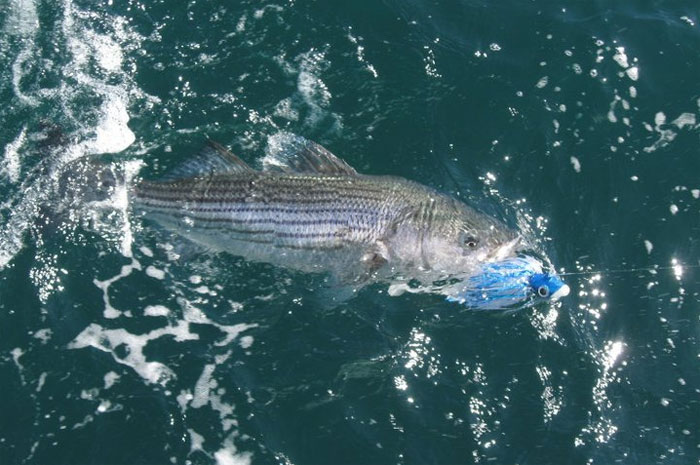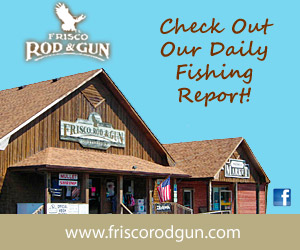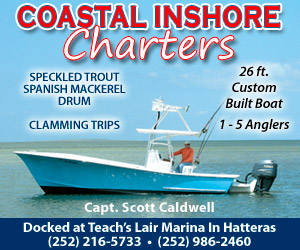
The N.C. Marine Fisheries Commission has adopted a no-possession limit for striped bass in internal waters in the central and southern coastal areas of the state.
The management measure, once implemented, will apply to both commercial and recreational fishing in in the Central Southern Management Area, which encompasses all internal waters from just south of Oregon Inlet to the South Carolina line. The waters that will be impacted include, but are not limited to, the Pamlico and Core sounds and the Tar, Pamlico, Pungo, Bay, Neuse and White Oak rivers and their tributaries.
The management change will not impact striped bass fishing in the Atlantic Ocean, Albemarle Sound Management Area, Roanoke River Management Area, and inland waters under the jurisdiction of the N.C. Wildlife Resource Commission. The change also will not impact the Cape Fear River and its tributaries, where a no-possession rule already exists.
The management measure will still allow recreational catch-and-release of striped bass in the impacted areas.
The no-possession limit, essentially a year-round closed season, was adopted through Supplement A to Amendment 1 to the N. C. Estuarine Striped Bass Fishery Management Plan, and it is meant to be a temporary restriction to protect possible naturally-spawned year classes of striped bass until Amendment 2 to the N. C. Estuarine Striped Bass Fishery Management Plan is adopted. Amendment 2 could continue the no-possession provision or recommend other management actions.
Research has shown that striped bass in the Central Southern Management Area are not a self-sustaining population and that fishermen are mainly catching hatchery-raised fish; however, data suggest there have been two recent naturally-spawned year classes. The no-possession management measure will offer additional protection for those non-hatchery fish and protect larger females which could increase natural spawning stock biomass.
The commission also asked the director of the Division of Marine Fisheries to issue a proclamation that restricts the use of gill nets that interact with striped bass upstream of the ferry lines in the rivers and requires attendance of gill nets that interact with striped bass upstream of the tie-down lines. Division Director Steve Murphey said he is reviewing this request.
Important in this review is discard mortality from recreational hook-and-line fishing and commercial gear in this fishery.
Tie down restrictions contained in Amendment 1 of the Striped Bass Fishery Management Plan have shown to reduce bycatch in the large mesh gill net fishery by up to 75 percent. Large mesh gill net users are required to tie the net down to no more than 36 inches from the bottom in most of the portion of the rivers where striped bass are encountered.
Additionally, large mesh gill nets are not allowed in the upper portions of the rivers within 50 yards from shore when commercial striped bass season is closed. This will apply year-round as long as supplemental measures are in effect. This reduces encounters with striped bass, which utilize submerged structure along the shore.
Recreational fishermen are encouraged to reduce catch-and-release discard mortality through the use of non-offset circle hooks and limited handling of released fish.
In other business, the Marine Fisheries Commission voted to:
- Support the concept of legislation to amend GS 113-168.2 (i) to require reporting of all catch with commercial gear (except for harvest under a Recreational Commercial Gear License) and through tournaments.
- Go forward with a proposed amendment to Marine Fisheries Commission Rule 15A NCAC 03M .0509 to make it unlawful to puncture or harvest tarpon, but still allow catch-and-release. The current rule limits tarpon harvest to one fish per person per day by hook-and-line only with no allowance to sell.
- Refer the N.C. Wildlife Federation’s Petition for Rulemaking (excluding aspects pertaining to spot and croaker) to the Shrimp Fishery Management Plan Advisory Committee for consideration in developing Amendment 2 to the fishery management plan and recommend the following goals and objectives for the shrimp plan:
- Reduce takes and interactions of non-targeted species and threatened species.
- Improve the survival of non-target and threatened species at the population level.
- Continue to minimize bycatch and enhance the economic value of shrimp.
- Promote habitat enhancement and provide environmental quality necessary to improve the shrimp resource.
- Review nursery areas with an updated look at secondary nursery areas.
- Implement research and education programs to allow a better understanding of the public, industry and consumers of shrimp bycatch impact on fish population dynamics.





